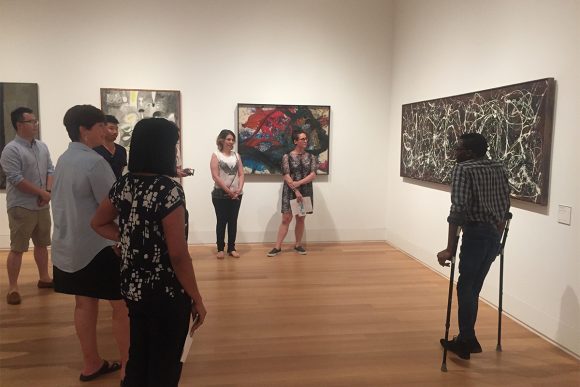
Art as a Reflection on Leadership
Daniel Adereti MAM ’17 reflects on a recent visit with his classmates to the Yale Art Gallery.

We visited the Yale Art Gallery as part of the Master of Advanced Management’s “self-reflection” week, which seemed carefully crafted to highlight the biases we had formed in our minds as MBAs, how these biases had shaped us, and how reflections can help to build an authentic team culture among future global leaders.
After the tour of the Yale Art Gallery, we were told to pick a work of art and to relate ourself to the artist. We considered how our selection fit into the world of leading others. It served as an eye opener for all of us as we went from John Trumbull’s American art to Claude Monet’s Impressionist era-works, and everybody found such profound meaning in the piece of work that stood out for them.
Jackson Pollock once said, “It doesn't make much difference how the paint is put on as long as something has been said. Technique is just a means of arriving at a statement.”
I picked Arabesque, a controversial Pollock work, because I had always considered myself a non-conformist. The work gave me a sense of intentional drama and direct expression, while trying to keep the audience at a distance, and it didn’t unveil its full meaning at first sight. While I follow a life philosophy of being intentional in every action, everything will not be bright and rosy, but living actively (intentionally) is the bedrock of self-confidence and purposeful living.
Often times we are ruled by a sense of materialism and the need to gather more, but the emptiness of being is such an unwavering existence that it always tests your intentions. Therefore, amidst our doubts and moments of confidence, we need to ask ourselves how pure our intentions are, remembering not to discount any thought, but to entertain the belief that you decide what is relevant.
In addition, Jackson painted on a stretched canvas with boundaries and that showed me that even in my “theory of randomness”—a poem I read during the presentation—I have a boundary: I am either bound specifically by my family commitments, my job title, or generally by life, but I define where my boundaries are set.
